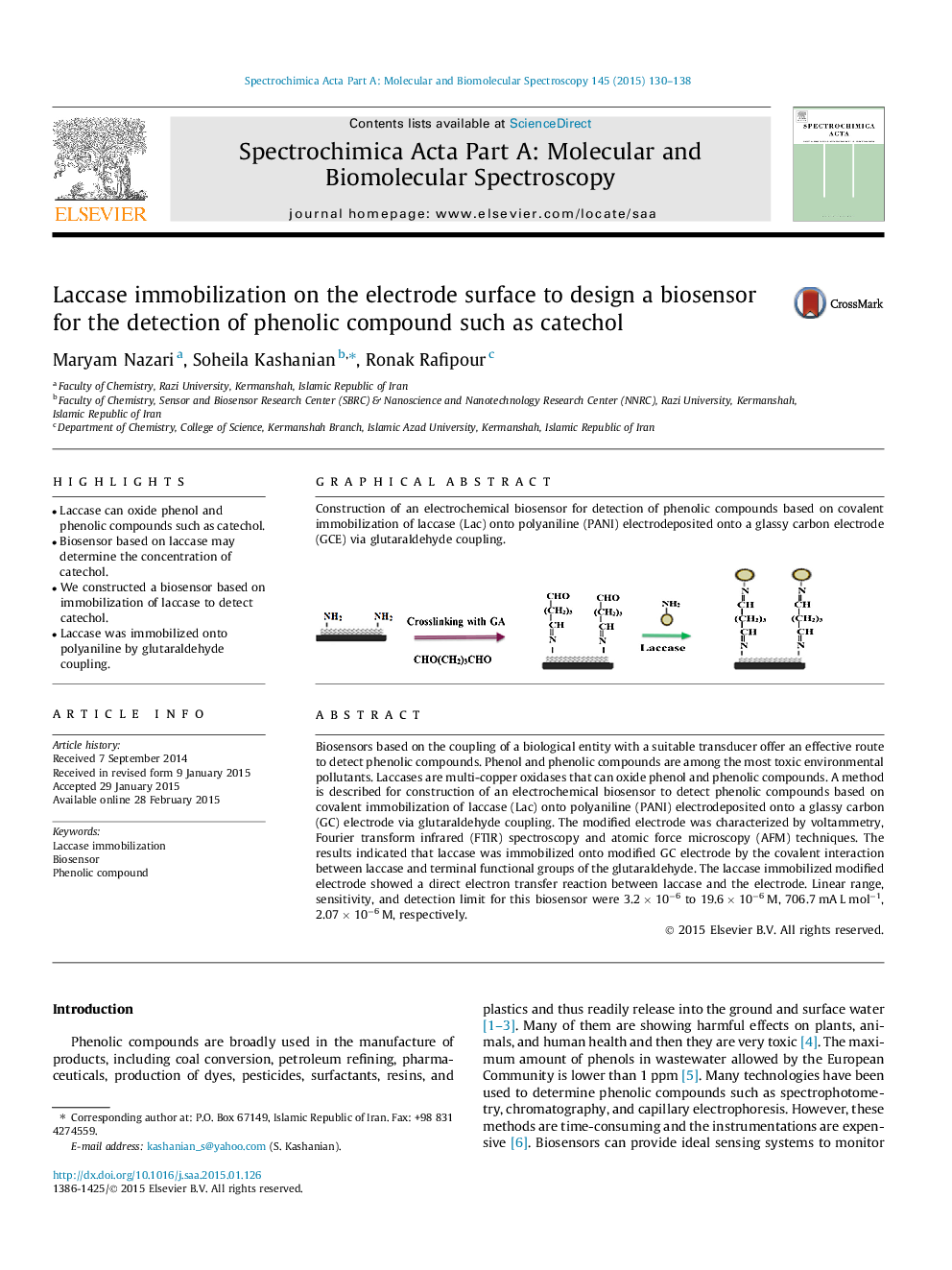| Article ID | Journal | Published Year | Pages | File Type |
|---|---|---|---|---|
| 1228967 | Spectrochimica Acta Part A: Molecular and Biomolecular Spectroscopy | 2015 | 9 Pages |
•Laccase can oxide phenol and phenolic compounds such as catechol.•Biosensor based on laccase may determine the concentration of catechol.•We constructed a biosensor based on immobilization of laccase to detect catechol.•Laccase was immobilized onto polyaniline by glutaraldehyde coupling.
Biosensors based on the coupling of a biological entity with a suitable transducer offer an effective route to detect phenolic compounds. Phenol and phenolic compounds are among the most toxic environmental pollutants. Laccases are multi-copper oxidases that can oxide phenol and phenolic compounds. A method is described for construction of an electrochemical biosensor to detect phenolic compounds based on covalent immobilization of laccase (Lac) onto polyaniline (PANI) electrodeposited onto a glassy carbon (GC) electrode via glutaraldehyde coupling. The modified electrode was characterized by voltammetry, Fourier transform infrared (FTIR) spectroscopy and atomic force microscopy (AFM) techniques. The results indicated that laccase was immobilized onto modified GC electrode by the covalent interaction between laccase and terminal functional groups of the glutaraldehyde. The laccase immobilized modified electrode showed a direct electron transfer reaction between laccase and the electrode. Linear range, sensitivity, and detection limit for this biosensor were 3.2 × 10−6 to 19.6 × 10−6 M, 706.7 mA L mol−1, 2.07 × 10−6 M, respectively.
Graphical abstractConstruction of an electrochemical biosensor for detection of phenolic compounds based on covalent immobilization of laccase (Lac) onto polyaniline (PANI) electrodeposited onto a glassy carbon electrode (GCE) via glutaraldehyde coupling.Figure optionsDownload full-size imageDownload as PowerPoint slide
